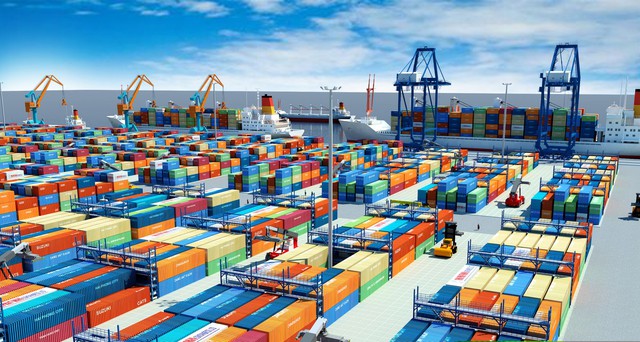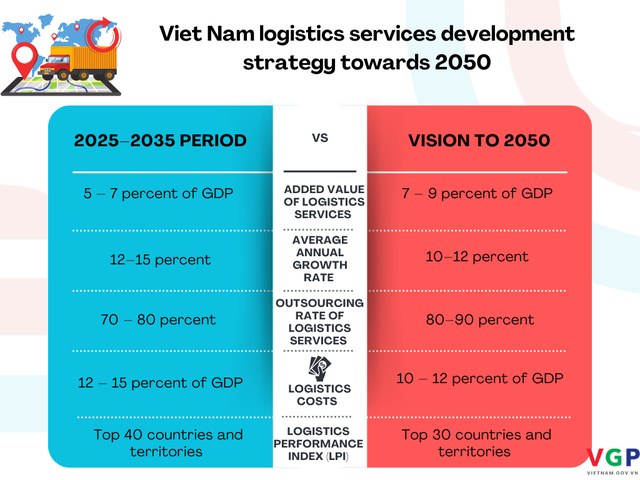Gov't approves logistics services development strategy towards 2025
VGP - The Government has approved the Logistics Services Development Strategy for the 2025–2035 period, with a vision to 2050.

The strategy targets to convert Viet Nam into as a global trans-shipment and distribution hub
Under the strategy. the Government targets to build a sustainable, efficient, and high value-added logistics sector with strong competitiveness, capitalizing on Viet Nam's advantages in global supply and value chains.
The added value of logistics services is expected to account for 5–7 percent of the national GDP, growing at an average annual rate of 12–15 percent.
The strategy also aims to raise the outsourcing rate of logistics services to 70–80 percent while reducing logistics costs by 12–15 percent of GDP.
The Southeast Asian nation targets to be among the top 40 countries and territories in the World Bank's Logistics Performance Index (LPI). By 2025, 80 percent of logistics enterprises are expected to adopt digital transformation solutions.
The sector will promote low-emission and green energy transition. By 2035, 70 percent of the logistics workforce will be professionally trained, including 30 percent with university degrees, and five world-class logistics centers will be established as regional and global hubs.
By 2050, logistics services are expected to account for 7–9 percent of GDP, growing 10–12 percent annually, with the outsourcing rate reaching 80–90 percent and logistics costs reduced to 10–12 percent of GDP. Viet Nam also aims to rank among the world's top 30 in the LPI, with all logistics enterprises fully implementing digital transformation solutions.

Positioning Viet Nam as a global trans-shipment and distribution hub
To realize the above goals, the strategy outlines measures to improve the legal and institutional framework, enhance the business environment, attract participation from all economic sectors, and strengthen international integration. It also emphasizes better state management and law enforcement in the logistics sector, aligned with market mechanisms and global practices.
The Government will prioritize investment in modern, synchronized logistics infrastructure—including transport, trade, and digital systems—ensuring environmental protection, disaster prevention, and climate resilience.
The strategy highlights the need to strengthen cross-sectoral, regional, and international linkages, develop sustainable logistics markets and supply chains, enhance business competitiveness, and foster green, high-quality logistics services based on digital platforms.
The strategy underscores the importance of innovation, research, and advanced technology application to improve logistics efficiency in production, trade, and distribution at both domestic and international levels.
In parallel, Viet Nam will develop high-quality logistics human resources, modern supply chains, and value-added logistics services to meet domestic and global demand, working towards positioning the country as a global transshipment and distribution hub./.
